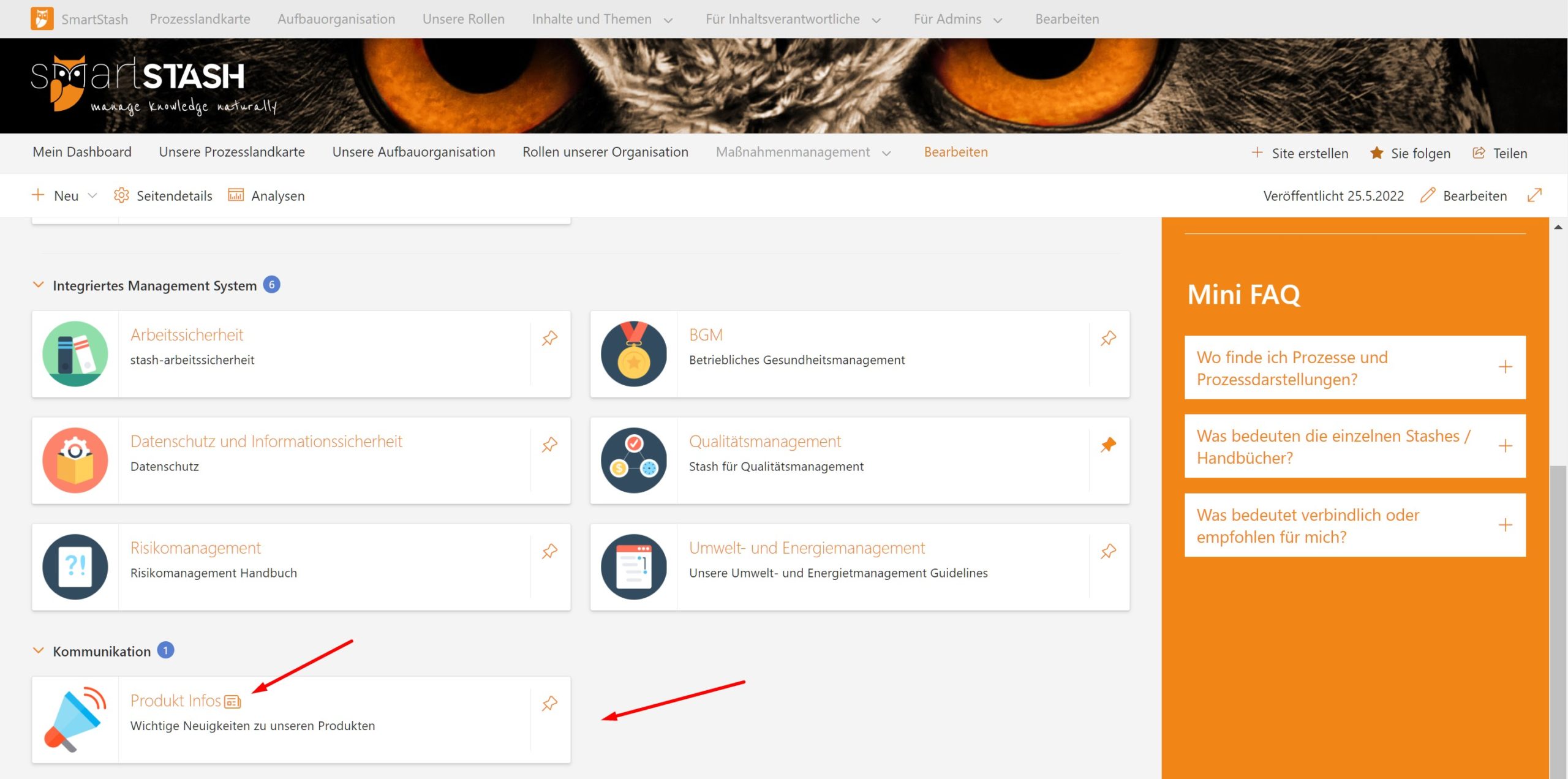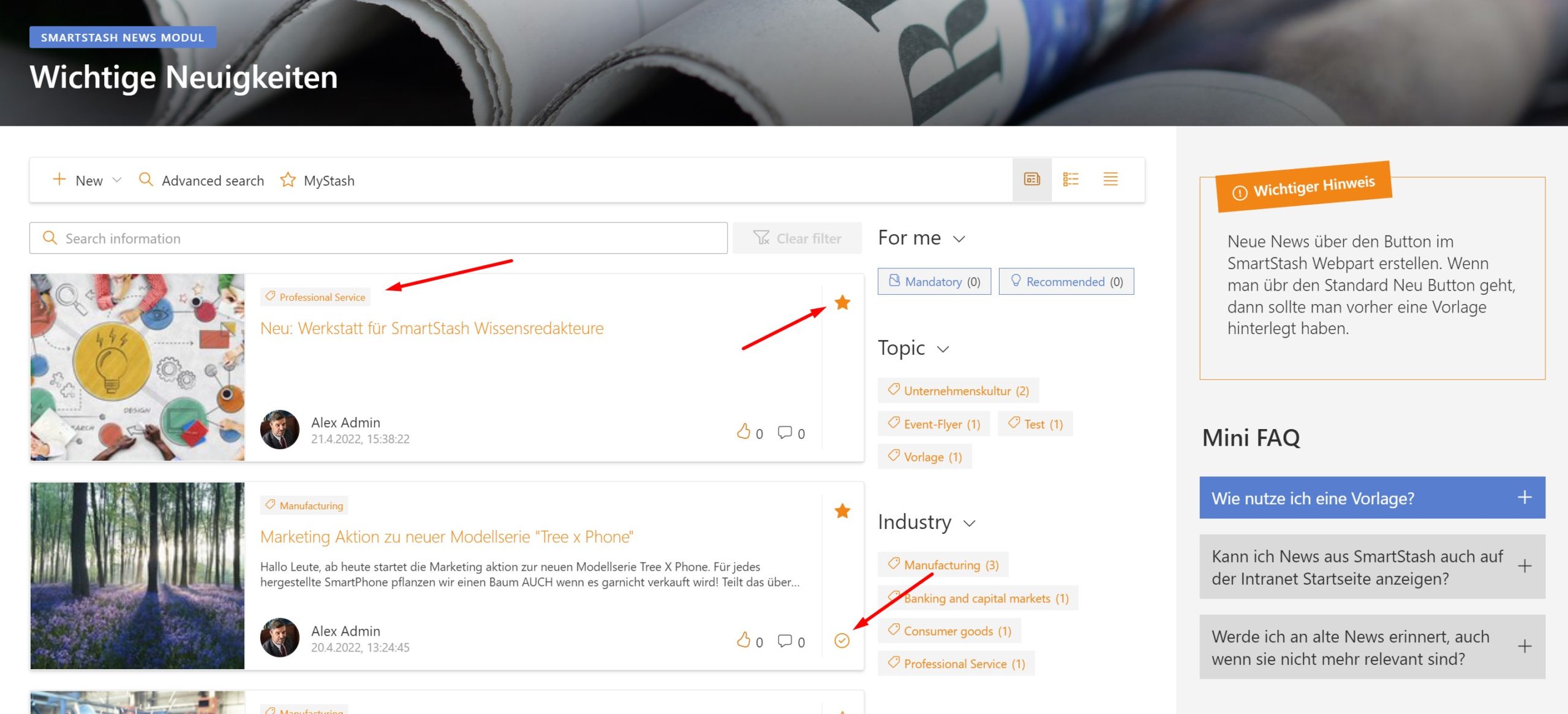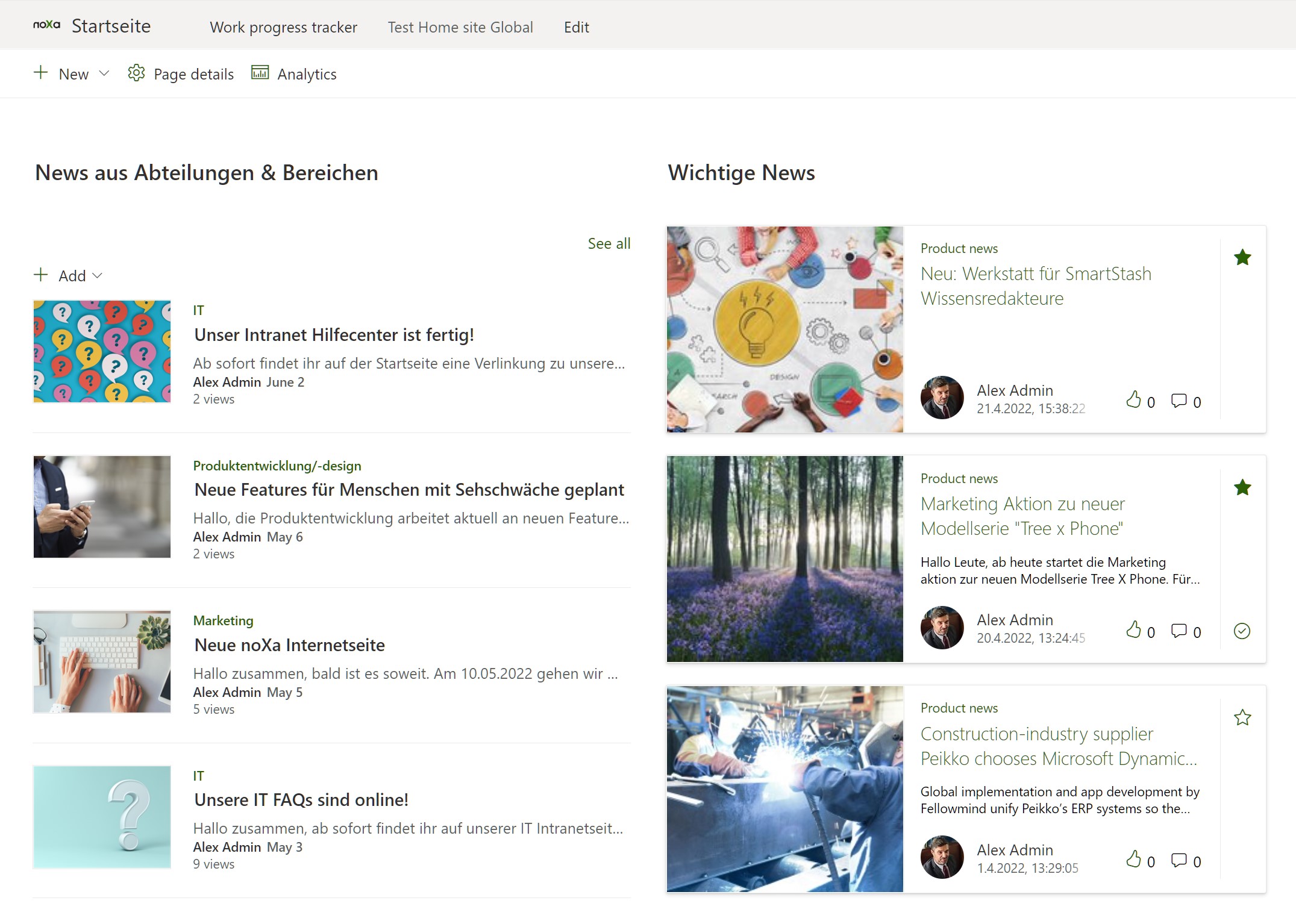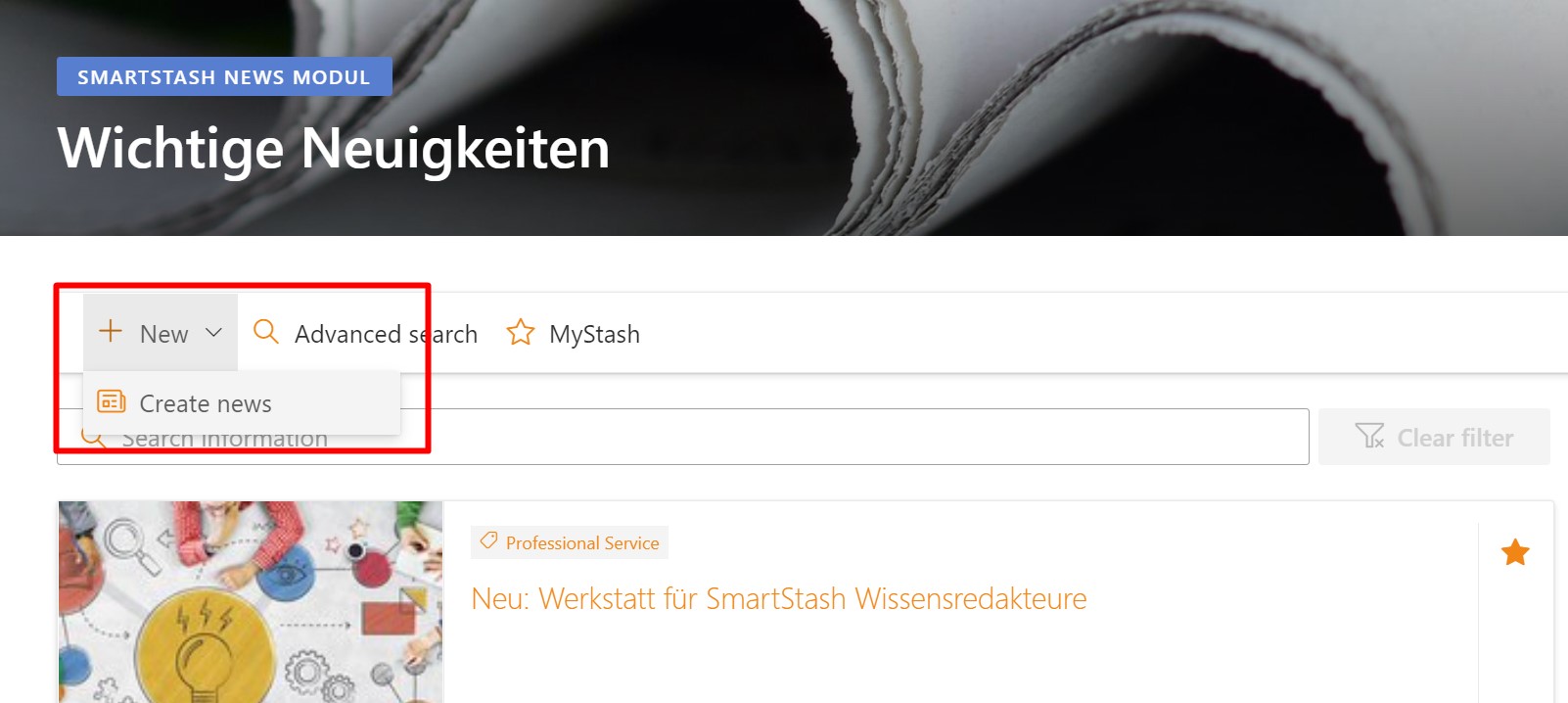Why do you need news in knowledge management?
What's the point of archivable news in knowledge management and what does it have to do with seasonal campaigns? You can read about that in this article.
With this topic, you could think they've gone crazy! What does news - which is usually only valid for a certain period of time - have to do with knowledge management? Actually more than you might think! Especially in combination.
SmartStash offers this feature for several good reasons. But first, let's show them how the "News Stash" works.
The SmartStash News Stash
The News Stash is basically built the same way as a normal Stash. You can also control the target groups and permissions, manage email messages and set workflows in the admin area.
Visually, the news stash is a little different from normal stashes. In the news overview you can already see the most important tag on article level, you can favorite the article and see if you have already read and confirmed it. For your personal overview this is super useful, because you can then also find this article in your favorites!
Tip: You can always recognize the news stash by the small news icon to the right of the title.
How do I create an article as news?
First you have to switch to the corresponding news stash. Then click on "New" and select "Create new news". In principle, they can create news articles just like normal knowledge articles. Also here they have the metadata panel and can distribute the news to target groups and request the read confirmation.
If you want to add more documents, you can easily do this by using the attachments, or associated files solve.
Note: Articulated documents cannot be created or distributed as news!
Example of how to use the news stash
So far, so good. But why should articles in a knowledge management system only be used for a short period of time? That's not really what the inventor had in mind.
For example, let's imagine a company that offers promotions, campaigns or seasonal products in regular cycles. So for a period of 3 or 6 months, a very important piece of information applies to, let's say, several locations - Europe-wide. Now all employees - including those who are new to the company during this period - need to know about the promotion. The procedure, the framework conditions, simply everything. And then possibly with different regulations, due to different countries. Sounds pretty complicated?
But it is not!
The knowledge they need to comply with certain rules and regulations is already at their fingertips in SmartStash. What they are missing now is the time frame and the possibility to inform about it in a way that nobody can overlook it.
The News Stash helps with that!
Why is archiving knowledge valuable?
In the admin area they set the period for archiving news articles. These will then automatically disappear from the overview, glossary, etc.. However, the archived article can still be found via the global SharePoint search. So the information can be reactivated if needed and will not be lost.
Examples from everyday work
When does a news stash make sense?
- A knowledge contribution changes and this change requires an extensive explanation because it is very important. The associated news article will then explicitly explain what the change is and why it came about.
- There is a time-limited action and my employees must be able to find everything about the action in this period. In a restaurant, for example, it could be seasonal menus.
- No important information is lost in the on-boarding process. New employees also receive all the information they need retroactively via SmartStash News. In contrast to the e-mail sent once, the valid information can still be accessed 2 weeks after the start of a promotional period.
Remember, you can control who has to read and approve the news article! In this way, you can also track afterwards whether your information is received as it should be.
SmartStash Pro Tip!
Use the news articles to point out the necessary workflows - which are already stored in SmartStash - and thus ensure the qualitative implementation of the respective action.

More recent contributions






